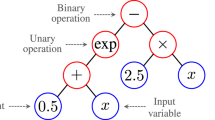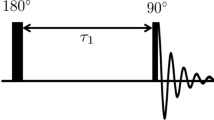Abstract
Improving oil recovery by CO2 injection continues to gain momentum in mature oil fields due to its favorable industrial and environmental benefits. One remediation for the poor sweep efficiency of CO2 is co-injection of surfactants to generate CO2-foams in reservoirs. However, it is essential to minimize the expensive and time-consuming experiments required during the laboratory screening of this EOR process for a given reservoir. In this regard, methods to predict RF and Q from reservoir characteristics based on existing laboratory test data are worthwhile. In this paper, we develop the RF and Q prediction models involving optimized multi-layer perceptron (MLP) and radial basis function (RBF) neural networks. These models are applied to a compiled dataset of 214 data records of published CO2-foam injection tests into oil-reservoir cores. The RF and Q prediction derived applying these two models to the compiled dataset are compared. Statistical accuracy measures of the predictions achieved for an independent testing subset (20% of the data records) indicate for RF (MLP: RMSE = 0.0236, R2 = 0.9988; for RBF: RMSE = 0.0197, R2 = 0.9991) and for Q (MLP: RMSE = 0.0283, R2 = 0.9971; for RBF: RMSE = 0.0092, R2 = 0.9991) the excellent prediction performance of the developed networks.















Similar content being viewed by others
References
Abdi-Khanghah, M., Bemani, A., Naserzadeh, Z., & Zhang, Z. (2018). Prediction of solubility of N-alkanes in supercritical CO2 using RBF-ANN and MLP-ANN. Journal of CO2 Utilization, 25, 108–119.
Ahmadi, M. A. (2015). Developing a robust surrogate model of chemical flooding based on the artificial neural network for enhanced oil recovery implications. Mathematical Problems in Engineering. https://doi.org/10.1155/2015/706897.
Ahmadi, M. A., & Pournik, M. (2016). A predictive model of chemical flooding for enhanced oil recovery purposes: Application of least square support vector machine. Petroleum, 2(2), 177–182.
Ahmed, S., Elraies, K. A., Tan, I. M., & Hashmet, M. R. (2017). Experimental investigation of associative polymer performance for CO2 foam enhanced oil recovery. Journal of Petroleum Science and Engineering, 157, 971–979.
Al-Dousari, M. M., & Garrouch, A. A. (2013). An artificial neural network model for predicting the recovery performance of surfactant polymer floods. Journal of Petroleum Science and Engineering, 109, 51–62.
Awad, M. (2010). Optimization RBFNNs parameters using genetic algorithms: Applied on function approximation. International Journal of Computer Science and Security (IJCSS), 4(3), 295.
Barati-Harooni, A., Najafi-Marghmaleki, A., Tatar, A., & Mohammadi, A. H. (2016). Experimental and modeling studies on adsorption of a nonionic surfactant on sandstone minerals in enhanced oil recovery process with surfactant flooding. Journal of Molecular Liquids, 220, 1022–1032.
Bedekar, P. P., & Bhide, S. R. (2011). Optimum coordination of directional overcurrent relays using the hybrid GA-NLP approach. IEEE Transactions on Power Delivery, 26(1), 109–119.
Berger, P. D., Berger, C. H., & Hsu, I. K. (2000). Anionic surfactants based on alkene sulfonic acid. U.S. Patent 6,043,391.
Broomhead, D. S., & Lowe, D. (1988). Radial basis functions, multi-variable functional interpolation and adaptive networks (No. RSRE-MEMO-4148). Royal Signals and Radar Establishment Malvern (United Kingdom). http://www.dtic.mil/dtic/tr/fulltext/u2/a196234.pdf.
Carrero, E., Queipo, N. V., Pintos, S., & Zerpa, L. E. (2007). Global sensitivity analysis of Alkali–Surfactant–Polymer enhanced oil recovery processes. Journal of Petroleum Science and Engineering, 58(1–2), 30–42.
Du, K. L., & Swamy, M. N. S. (2014). Radial basis function networks. In Neural networks and statistical learning. London: Springer. https://doi.org/10.1007/978-1-4471-5571-3_10.
Gevrey, M., Dimopoulos, I., & Lek, S. (2003). Review and comparison of methods to study the contribution of variables in artificial neural network models. Ecological Modelling, 160(3), 249–264.
Goodall, C. R. (1993) Computation using the QR decomposition. In Handbook in statistics (Vol. 9). Amsterdam: Elsevier/North-Holland. https://www.mathworks.com/help/stats/leverage.html.
Gramatica, P. (2007). Principles of QSAR models validation: Internal and external. QSAR & Combinatorial Science, 26(5), 694–701.
Hajirezaie, S., Hemmati-Sarapardeh, A., Mohammadi, A. H., Pournik, M., & Kamari, A. (2015). A smooth model for the estimation of gas/vapor viscosity of hydrocarbon fluids. Journal of Natural Gas Science and Engineering, 26, 1452–1459.
Kalyanaraman, N., Arnold, C., Gupta, A., Tsau, J. S., & Ghahfarokhi, R. B. (2017). Stability improvement of CO2 foam for enhanced oil-recovery applications using polyelectrolytes and polyelectrolyte complex nanoparticles. Journal of Applied Polymer Science. https://doi.org/10.1002/app.44491.
Keshmiri, K., Vatanara, A., & Yamini, Y. (2014). Development and evaluation of a new semi-empirical model for correlation of drug solubility in supercritical CO2. Fluid Phase Equilibria, 363, 18–26.
Li, R. F., Yan, W., Liu, S., Hirasaki, G., & Miller, C. A. (2010). Foam mobility control for surfactant enhanced oil recovery. SPE Journal, 15(04), 928–942.
Rajabioun, R. (2011). Cuckoo optimization algorithm. Applied Soft Computing, 11(8), 5508–5518.
Robson, R. J., & Dennis, E. A. (1977). The size, shape, and hydration of nonionic surfactant micelles. Triton X-100. The Journal of Physical Chemistry, 81(11), 1075–1078.
Rousseeuw, P. J., & Leroy, A. M. (2005). Robust regression and outlier detection (2nd ed.). New York: Wiley. https://doi.org/10.1002/0471725382.
Sajic, B., Dong, X., Matache, C., & Gariepy, C. (2006). Low solids, high viscosity fabric softener compositions and process for making the same. U.S. Patent Application 11/436,924.
Sayahi, T., Tatar, A., & Bahrami, M. (2016). A RBF model for predicting the pool boiling behavior of nanofluids over a horizontal rod heater. International Journal of Thermal Sciences, 99, 180–194.
Shen, C., Nguyen, Q.P., Huh, C., & Rossen, W. R. (2006). Does polymer stabilize foam in porous media?. In SPE/DOE symposium on improved oil recovery. Society of Petroleum Engineers.
Sheng, J. (Ed.). (2013). Enhanced oil recovery field case studies. Boston: Gulf Professional Publishing.
Simjoo, M., & Zitha, P. L. J. (2018). New insight into immiscible foam for enhancing oil recovery. In N. Narayanan, B. Mohanadhas, & V. Mangottiri (Eds.), Flow and transport in subsurface environment (pp. 91–115). Springer transactions in civil and environmental engineering. Singapore: Springer. https://doi.org/10.1007/978-981-10-8773-8_3.
Turta, A. T., & Singhal, A. K. (2002). Field foam applications in enhanced oil recovery projects: Screening and design aspects. Journal of Canadian Petroleum Technology. https://doi.org/10.2118/02-10-14.
Wood, D. A. (2016). Hybrid cuckoo search optimization algorithms applied to complex wellbore trajectories aided by dynamic, chaos-enhanced, fat-tailed distribution sampling and metaheuristic profiling. Journal of Natural Gas Science and Engineering, 34, 236–252.
Xu, X., Saeedi, A., & Liu, K. (2017). An experimental study of combined foam/surfactant polymer (SP) flooding for carbon dioxide-enhanced oil recovery (CO2-EOR). Journal of Petroleum Science and Engineering, 149, 603–611.
Yang, X. S., & Deb, S. (2009). December. Cuckoo search via Lévy flights. In World congress on nature & biologically inspired computing, 2009. NaBIC 2009 (pp. 210–214). IEEE.
Ydstebø, T. (2013). Enhanced oil recovery by CO 2 and CO 2-foam in fractured carbonates. MSc. thesis, The University of Bergen.
Zeng, Y., Ma, K., Farajzadeh, R., Puerto, M., Biswal, S. L., & Hirasaki, G. J. (2016). Effect of Surfactant Partitioning Between Gaseous Phase and Aqueous Phase on CO2 Foam Transport for Enhanced Oil Recovery. Transport in Porous Media, 114(3), 777–793.
Zhao, J. (2017). Comprehensive experimental study on foam flooding for enhancing heavy oil recovery. Doctoral dissertation, Faculty of Graduate Studies and Research, University of Regina.
Author information
Authors and Affiliations
Corresponding author
Electronic supplementary material
Below is the link to the electronic supplementary material.
Appendix
Appendix
A supplementary file consisting of two parts is available for this manuscript. Supplementary File Part 1 lists the measured variable values associated with all 214 data records in the compiled dataset with their published source identified. Supplementary File Part 2 lists the connecting weights (W) and bias vectors (b) for each node in the hidden layer of the optimized MLP and RBF networks.
Rights and permissions
About this article
Cite this article
Moosavi, S.R., Wood, D.A., Ahmadi, M.A. et al. ANN-Based Prediction of Laboratory-Scale Performance of CO2-Foam Flooding for Improving Oil Recovery. Nat Resour Res 28, 1619–1637 (2019). https://doi.org/10.1007/s11053-019-09459-8
Received:
Accepted:
Published:
Issue Date:
DOI: https://doi.org/10.1007/s11053-019-09459-8




